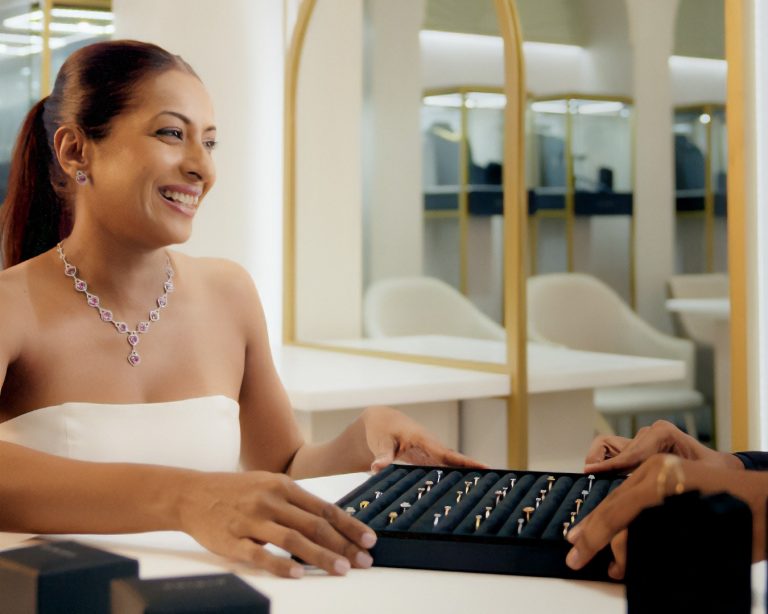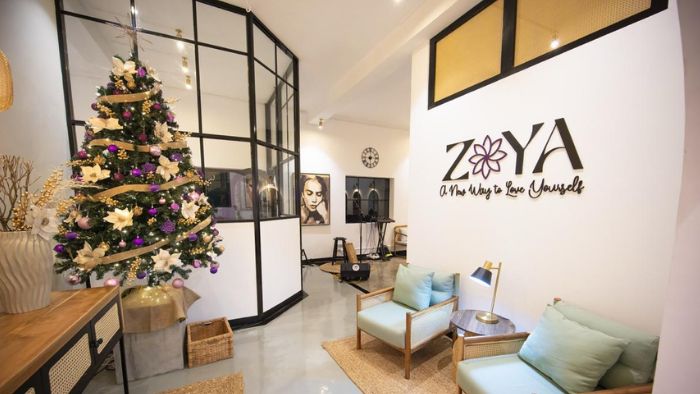Editor’s Note: This isn’t a post about Colombo, but Shifani visited and we found it interesting. Perhaps it’ll entice you to take a trip.
Mumbai is a tourist attraction for people all over the world. It’s India’s commercial and entertainment capital, its most populous city, and makes for an exciting trip if you’ve never been to India. So in case you’re heading there, here’s a guide.
You’d be surprised by how old Mumbai is. Especially in the Fort area you’ll find very old buildings everywhere, a lot of them in the British style.
The moment I walked onto a street in Colaba and looked down, I was like ‘the Portuguese have been here’. They were, in the 16th century. So as a Sri Lankan, you’ll feel a lot of similarities between some parts of Mumbai and parts of the Galle Fort and Pettah, because we have Portuguese occupation in common.
Mumbai is a little more expensive than other big Indian cities like Delhi, but still more affordable than Colombo. You get some amazing bargains if you know where to go, whether you want trinkets, clothes or books.
We mostly stayed around Colaba and the Fort, so there’s still more to see in Bandra and maybe Andheri (which looks pretty normal, though you can get tours here around Bollywood studios and stars’ homes). But we talked to a few Mumbaikers and they’ve certified our list – of 12 things you have to try in Mumbai.
1. Rustom Ice Cream
Rustom ice cream was one of the highlights of our trip. It’s an old ice cream shop that began in 1953 under a group of chemists. This isn’t just ice cream – it’s an ice cream sandwich. The ice cream is lodged between two thin wafers, and is available in more than 40 fun flavours, each costing only about 75 Sri Lankan bucks.
2. Parsi Food at Jimmy Boy’s
Mumbai is home to the largest population of Parsi Zoroastrians in the world. Parsis are originally from Iran, they migrated to India in the 7th century, and they’re quite a closely knit, powerful community in the city. I personally find them very interesting because they actually still maintain the ancient Zoroastrian ritual of the Tower of Silence.
We loved Parsi food (Sorry, no pictures! All we have is the statue of the Parsi man next to a highway). They’re big on meats and using coconut in curries. Jimmy Boy on Bank Street serves some great dishes – not sure about the name of our dish, it was probably Dhansak: a super spicy-sweet chicken in a thick red curry, eaten with rice and namkeen (aka murukku). Also watch out for their Patra Ni Machhi – fish wrapped in banana leaf.
3. Pav Bhaji, Vada Pav & Sugarcane Juice
Vada Pav is considered a staple of Mumbai street food. It’s basically a potato inside a bun (what a great idea), and the bun is often drizzled on the inside with chilli. I found it difficult to finish. Sugarcane juice tastes amazing though – there are street stalls everywhere in the Fort area, where you’ll see men squeezing the cane through machines and getting the juice out fresh. Mumbai is the home of the Pav Bhaji (‘Pav’ is bread in Portuguese, ‘Bhaji’ is a vegetable curry in Hindi). I absolutely loved it – it’s bread served with a ridiculously thick plate of delicious spicy gravy that you can’t finish, and if you’re really obscene, you can ask for cheese pav bhaji, which includes a thick layer of shredded cheese on top.
4. Ancient Caves
If you’re the sight-seeing type, then Mumbai has some very cool caves you can check out. There are the Kanheri caves with sombre Buddhist carvings on them that go back to the 1st century BCE, and the Elephanta caves, with striking giant Shiva carvings in them. The latter have no date markings so legend says the heroes and demons of the Mahabharata were responsible for building it, while art historians guess it’s from the 5th century AD. You have to take a lovely ferry ride to an island to access these caves (watch out for the beautiful old Taj hotel, and the British-built ‘Gateway of India’ at the ferry dock).
5. Theobroma’s
Forget ancient magical caves and culturally important monuments – I’m sorry, but hands-down, Theobroma completely owns everything else in Mumbai. ‘Theobroma’ means food of the gods, it’s a little cafe in Colaba off Peddar Road, and this is a super stop for all your sandwich and dessert needs. The beef sandwich we had here was plain amazing, and they’ve got great brownies, oreo cakes and a long list of sugary treats on display.
6. Haji Ali
The Haji Ali dargah was built for the Saint Haji Ali in the 15th century. It’s a shrine/temple set a long, long walk away from the entrance gate, and the walk is along a narrow pathway covered in trinket and flower stalls, flanked by miles of polluted lagoon. Inside the shrine is a great chandelier, and a priest who blesses devotees on the head with a bat of peacock feathers. Regardless of religion, people come from all over to be blessed by the Saint. Qawwali singers perform Sufi music here on Fridays.
7. The CST Station At Night
You might be walking through the Fort area through traffic and the random Indian stalls in the evening, when suddenly, you’ll see a golden palace lit up before you. It’s a magical sight – a fusion of Victorian Gothic and Mughal buildings, changing colour at night – and no, it’s not a palace, it’s a train station.
8. Dhobi Ghat
Dhobi Ghat, in front of the Mahalaxmi station, is Mumbai’s one-of-a-kind open air laundromat. Many of the washers live here in make-shift tin huts, and if you go there early morning, you’ll see miles and miles of white cloth hanging over this space, from the city’s hospitals. There are also giant urban buildings in the distance, so this crazy view is India’s rich/poor identity crisis in a nutshell. Colaba and the Fort are relatively posh – if you want to see the city’s dirty side, go to Dharavi, its largest slum.
9. The Museum
Mumbai has a pretty awesome, comprehensive museum. It’s usually called the Prince of Wales museum, but was renamed in an effort to culturally reclaim Mumbai’s buildings, to the impossible-to-remember ‘Chhatrapati Shivaji Maharaj Vastu Sangrahalaya’. You get a beautiful display of statues, paintings and artefacts here – check out the Ratan Tata section (this is the guy behind the TATA group of India – also a Parsi family) and watch out for the caps and chains made out of human bones.
10. Bablu at the Fort Market
The Fort area market stretches on for a long time, but there’s a lovely corner on the street near the Jehangir Art Gallery dedicated to everyday art. Sometimes you get art festivals here, and always you’ll find random people sketching, pegging up their work on fences, and doing live portraits. Watch out for Bablu’s books in the Fort area, Bablu is a sweet old man with a pile of books next to him on the pavement – and he’s read every one. Chat with him for a few minutes and he’ll pick out exactly the ones you’d love to read, for great prices.
The Fort market also has some of the randomest shizzle you will ever find – one of them being dildos. This is technically illegal though, so if you ask the hawkers about it, they’ll tell you these are ‘massagers for the neck, shoulders, wherever’. Pretty hilarious.
11. Colaba Market
The Colaba market is a great place for gift shopping, and clothes if you like loose, cotton tops that are comfy in tropical weather. Make sure you learn some Hindi to bargain for awesome prices, and if you’re looking for pocket watches, clocks or compasses, this market has a massive collection of them.
12. Marine Drive At Night
With all the madness associated with Mumbai’s rep as a big dirty city, you forget it’s also by the coast. They’ve got a beach, although it’s crowded and you’d rather the ones in Sri Lanka. They’ve also got a Marine Drive, with a drop much like the one at Colombo’s Galle Face. You can sit there and look out at the lights on the skyline, and boys selling tea and snacks will come by. In the evenings you might see a few people setting off floating lanterns in the sky, or you can catch a ride in a horse-drawn carriage. Women can wander about in this part of Mumbai even past midnight – it’s super safe, and men don’t stare like you’re an alien like they do in Sri Lanka – that’s probably one of the best things we enjoyed in the city.
Cost & Season
We visited Mumbai at the end of November, so the weather was pretty pleasant, warm but breezy, the post-monsoon season. We’ve heard the summers are dusty and uncomfortable (March-May) so maybe avoid that time. A plane ticket from Colombo to Mumbai and back, would cost about 18K (Sri Lankan rupees), but get better rates by booking way ahead of time.
Conclusion
Mumbai definitely makes for a fascinating visit, and the place is a completely mad contrast to life in Sri Lanka. If you’ve already been to an Indian city like Delhi, Mumbai might not shock you as much as it would a total foreigner, so if you’re thinking of a first trip to India, the Bollywood capital is a good place to start.






